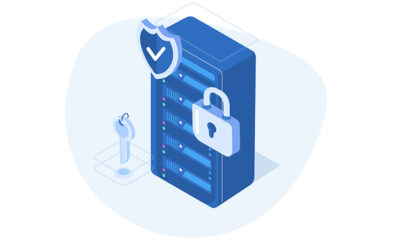Industry events for event managers focus on one mega-trend: how can organizers increase the interactivity of their events? Are technical tools such as Glisser, Slido or VoxR the solution?
(updated 26 July 2018)
Participative Event Formats are the Current Trend
The times of event participants simply wanting to be showered with info are over. Organizers value a stronger exchange with participants – and this not just since the events world has started concerning itself with the changing requirements of Generation Y. The inclusion of participants is the first order of the day. Here at Converve, we contribute with our solutions to making sure that matchmaking and networking is not left up to chance.
It is obvious that event managers need to address interactive formats: Nowadays, hardly anyone goes to a fair or congress just to gain information.
Exchange instead of Information Transfer at Fairs and Congresses
Information has become common knowledge. People constantly have handhelds with them that have a capacity superseding that of computers used back in the day to monitor the moon landing! The “always on” generation has permanent access to all available information – and doesn’t need an event for that.
Justifying events’ right to exist is increasingly more about offering platforms where like-minded people can meet. Events serve the classification of facts, they give perspective and they are perfectly suited to recognizing trends and discussing them with each other.
Interaction via Smartphone and Tablet
In the last few years, an industry for audience interaction and response systems has developed. Companies in this industry create technical tools with which event participants can be included in events on stage. The idea behind this is to facilitate interaction with presenters via smartphones and tablets – being well aware that the large majority has these devices with them, anyway.
If you consider that smartphone users on average look at their mobile phones 85 times per day and probably won’t let a conference stop them from continuing to do so, it definitely makes sense to include smartphones and tablets in event production.
Who offers such tools? We’d like to present 3 exemplary tools.
Slido: Simple, Intuitive Interface
One of the players that has offered audience response solutions for a considerable amount of time is Slido. The company from Bratislava has been around since 2012 and is thereby far past the startup phase. Since its foundation, Slido technology has been used at over 140,000 events to collect feedback from the audience via surveys or Q&A sessions. This includes events such as SXSW, Le Web, TEDx and the Pioneers festivals. The tool was even used at a debate with applicants for the office as the Mayor of London.
Slido lays great emphasis on intuitive design without barriers. This means that event participants don’t have to first download an app, rather simply go to the sli.do website via smartphone, enter the event code and then immediately take part in surveys etc.
This philosophy also covers Converve’s perspective that web apps, in comparison to native apps (those that first need to be downloaded), are more predominant.
Simple Back-Office
Slido is also kept simple for organizers, allowing simple setup and planning of interaction for events in a few minutes. The tool allows the display of polls where the audience can submit questions (and, where applicable, can be moderated), they can ‘like’ questions and thereby prioritize them, and the tool can show tweets (e.g. as a social media wall).
By means of the Slido Switcher, interactive polls and questions can be easily integrated in Powerpoint, Keynote or Prezi.
Glisser App for Presentation Sharing
London based Mike Piddock founded the company Glisser in 2014 and has managed to achieve entry into Microsoft Ventures Accelerator 2016, a startup support program.
Glisser covers the same scope of functions as Slido: Polls, questions, feedback, tweets. However, the company follows a slightly different philosophy, with the presentation as a key focus point. The PowerPoint or Keynote is uploaded to the web (glisser.com) and interactions are then configured by the speaker.
The nice thing about this is that surveys or feedback can be directly integrated into the process of the presentation, which is dramaturgically interesting for the speaker.
As with Slido, participants don’t need to download an app, rather simply enter the web address into their mobile browser and can then follow the presentation, tweet individual slides, answer questions etc.
If they want to download the presentation at the end, participants simply enter their e-mail address and receive the slides automatically. The advantage for the speaker: He/She can generate new, relative leads.
VoxR – Audience interaction from Hanover
Also the tool from Hannover masters collecting and organizing questions and surveys from the audience. It also offers a feature called “Sense”. Feedback from the room is presented and displayed as a tag cloud. That might sound a bit 90s internet, but it can nonetheless be very interesting in a live situation.
Companies like Volkswagen, Swisscom, Merck or Mercedes-Benz have implemented the system at their events.
However, VoxR doesn’t offer any possibility to stream or integrate presentations.
What about data protection…?
In GDPR-times, data protection plays an important role when using audience response systems. Participants at an event share opinions, questions, comments via an audience response system. Should the organizer save this information, we talk about personal data. Hence: The participants have to be informed about what kind of data will be stored, they have to give their consent and, upon request, the organizer has to be able to delete personal data.
Choosing an audience response tool, GDPR-conformity should make it on your list of requirements. This is how VoxR tackle this issue.
How Far Can/Should Technology Go?
All three interaction tools are purely browser based and value a simple and slick operation concept. It is definitely fun to use the tools and they offer great moments of surprise by which participants take the lead.
This definitely also facilitates reaching participants who normally wouldn’t feel comfortable standing up at a conference to ask a question – after all, not everyone is a born entertainer and many break into sweat simply at the thought of having to speak in front of an audience.
So far, so good.
What digital aid should however not replace is the capability of a speaker to reach and enthuse the audience. This capability of inspiration is neither in PowerPoint slides, nor digital tools.
This can be well observed in legendary TED Talk held by Jamie Oliver, where he calls for better nutrition in schools. This presentation is done with virtually no slides, but is still extremely thrilling and convincing – thanks to the speaker!
Challenges – Are All Speakers Fit for Audience Response?
Not every speaker or facilitator can deal with these new possibilities. The use of audience response tools should be well balanced and, more importantly, practiced. Audience response tools also shouldn’t be used for every topic or audience.
We are also at at point where Audience Response Tools no longer have the “wow-factor”, making every participant snatch their smartphones to take part. So, as a presenter or facilitator, you need a good story to make the participants join in and use the interaction tool.
These are some more supplieres of Audiende Response Tools:
Technology as a Means to an End
I find that technology is helpful when it supports human interaction – as opposed to replacing it. That is our philosophy at Converve: Our software should facilitate human exchange and thereby help organize this exchange more efficiently.
But, at the end of the day, it is there for people to get together, meet face to face and gain trust – the basis for successful business contacts!



